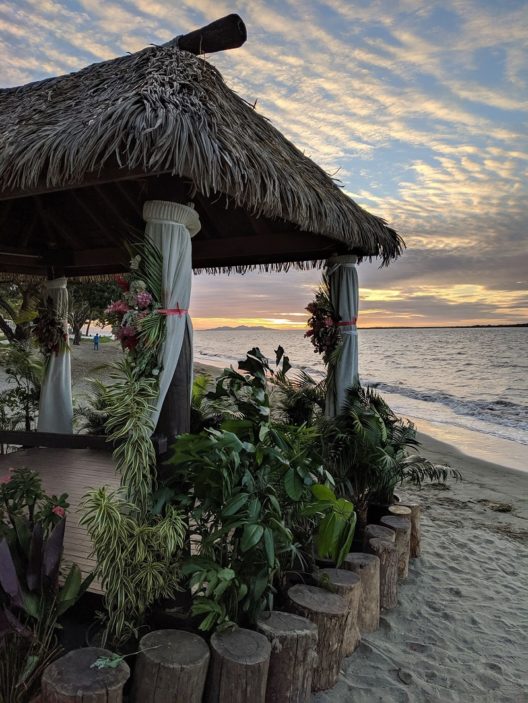![]()
Now that the Google Pixel 3 and its XL version have shown what the company is capable of when it comes to premium features and computational photography, the streamlined Google Pixel 3a (and 3a XL) test the team’s ability to balance a much lower price bracket with similar power, taking them into uncharted non-premium territory.
The 3a series is a “budget” variant of Google’s latest flagship devices, stripping some of the beef that made the 3/3 XL some of the best phones on the market but keeping the profile of great photography, gorgeous display, fast performance, and reliable battery life. Did they succeed? That’s a resounding yes. In fact, the 3a is possibly Google’s greatest achievement to date, as far as smartphones go, and a true game-changer.
With phones getting more expensive, AI getting more sophisticated, and a sharp focus on improving smartphone photography, it’s getting harder to resist shelling out over $1,000 for the latest device. Although it also means the higher-end price category is getting oversaturated with choice. Settling for anything less represents significant sacrifices that consumers just don’t want to make.
This affected Google’s sales when the Pixel 3 (and XL) was quickly overshadowed by competing brands like Huawei and Samsung, but the company has pushed back in the best possible way, deciding to completely dominate the mid-range and recalibrate what people should expect from a phone that’s in the $650-$800 range.
Sure, that’s still expensive, but you’ll soon understand why.
Leave the Notch, Keep Everything Else
Google’s re-work mostly lie underneath the hood, with very minimal design changes to how the phone actually looks. If you’re familiar with the 3 proper, you’ll instantly recognise the slick contours that run around the top and bottom of the screen, which is slightly reduced in size when compared to its older cousin. Whereas the 3 proper had a 6.3-inch QHD+ display, the Pixel 3a XL (which is what this review is based on) settles for a comfortable 6″ FHD+ OLED. This harkens back to the Pixel 2 XL, but is by no means a downgrade; the size is perfect and never felt bulky in my hand.
Although some users may still need two hands to comfortable hold this thing in their hands, in which case the Google Pixel 3a (ie, not the XL) is more appropriate at 5.6 inches. It also has the same camera and a few other features, so opting for cheaper isn’t much of a compromise.
The most notable difference in design is the complete removal of the narrow swooping notch that gave the Pixel 3 proper a significant amount of backlash. Google have obviously listened closely to consumer feedback to help bring some fan-service into this phone, and it pays off with a better visual experience.
The other big change is the move away from the more premium Gorilla Glass 5 case of the Pixel 3 XL, instead opting for a cheaper plastic shell (though still with that highly attractive two-tone design). Yes, it feels less premium, but it hardly matters given it also ups durability – a pay-off I prefer.
The fingerprint sensor is still on the back, in the perfect place for the index finger when your hand wraps around the phone, and still allows you to swipe down to bring up the display’s notification shade. Higher end phones hide this function away in the display, but having separate hardware for it certainly makes the process faster and less clunky, making more room for gestures that don’t overlap.
Oddly enough, Google have opted for a bright yellow power button to help visually separate it from the volume buttons. Sure, I guess. The fact that power and volume where on the same side never really bothered me, but at least it helps those who may have had a few accidental slip ups in the past.
If getting rid of the notch didn’t tell you how eager Google were to please the masses, the return of the eternally missed 3.5mm headphone jack. No more will you be limited by headphone choice, and having the option there, even though I make frequent use of my Bluetooth earbuds, is very much appreciated.
As for the subtractions, Google have understandably had to cut a few features to arrive at a price point this attractive. That includes getting rid of the Pixel proper’s IP68 water resistance rating, efficient facial recognition, MicroSD slot, and ability for wireless charging. Aside from the water resistance, many of these aren’t necessary for everyday users, so it’s a very fair trade-off to keep costs relatively low.
Photography & Performance

The most qualitative downgrade is the fall from a Qualcomm Snapdragon 845 to a Snapdragon 670, as well as removing the Visual Core chip which helped boost computational photography. The former change takes away some of the Pixel 3 proper’s processing power, but it’s only a difference you’d notice with intensive apps or more demanding games. Again, everyday users will find this change negligible.

Removing the Visual Core chip would, in the theory, be a more significant downgrade, given the camera can no longer rely on this custom-built processor to help finesse images in a fast and efficient manner. Instead, the Pixel 3a XL relies more heavily on AI. You may notice the results, with the Pixel 3 proper’s camera obviously much faster, more accurate and generally more consistent, but for the most part you’ll get close-enough to the superior photography experience that defines Google’s flagship line. Images will mostly be sharp, and colour-accurate in standard mode, Night Sight will be more or less the same (excusing a less consistent performance), but it’ll just take a bit longer to process, and Portrait Mode is still amongst the best out of any phone out right now. In fact, there are times when my Pixel 3a XL’s Portrait Mode was more reliable than Super Macro or Aperture Mode on my Huawei P30 Pro, which is saying a lot.


Portrait Mode also, much like the Pixel 3 proper, saves two versions of the same photo so you can toggle between having a version with and without the bokeh effect. This is useful to see how the AI has measured the amount of bokeh, which differs from time to time but is usually good enough to enhance depth. There are times, however, when I found the camera to blur the background a bit too much, which makes me appreciate Aperture mode on the P30 Pro a bit more, where you can control the amount of bokeh you get.

A 12.2MP (f/1.8) camera takes care of the rear, while selfies are handled by the 8MP (f/2.0) lens on the front. That’s more than enough to produce incredibly balanced photos with plenty of detail and impressive accuracy, although the selfie camera’s wide-angle mode, a key feature of the Pixel 3 proper, is sorely missed. Wide angles have become extremely valuable in modern smartphone photography, and its absence, I feel, is the most significant loss here. Especially since I’m travelling so much, having a wide-angle has become invaluable (I use the wide-angle rear on the Huawei P30 Pro possibly more than I use anything else I own), but cuts are to be expected in this range, even the hurtful ones.

It’s a Google, so the Android 9.0 experience offered is the best it can be. That also means any software updates will come to you first, with at least three years guaranteed of rolling operating system and security updates. This commitment to continually finesse the Google Android experience isn’t very common in other phones of this price range, so consider that another big pro for the 3a.
In terms of battery, you’re looking at a fairly powerful 3,700mAh, which is actually bigger than the 3 XL (3,430). I found the 3 XL would be incredibly unreliable when it comes to battery, especially if you’re a traveller constantly taking photos. The 3a has less of an issue when it comes to that, with 11-12 hours on reasonable use and adaptive battery tech that continually improves life depending on your personal habits. Although when the camera comes out, and is constantly on, things can vary a bit more.
You’ll be using a USB Type-C to charge this, as expected, and 18W fast-charging has been included to ensure your battery fills up quickly. That certainly makes up for the lack of wireless charging, which most users really aren’t fussed with anyway.
Verdict
If you’re not finnicky about the smaller details, the Pixel 3a XL (or 3a) is simply a must buy for Android users who feel a 1k+ phone is too far out of budget. It’s unequivocally the best bang for your buck on the market, helped greatly by the smart compromises the Google team have made to keep this balancing price and quality.
Most central to this is everything done to keep the camera experience almost exactly the same across the flagship line and the 3a variants. It’s unheard of with other phones, which puts this significantly ahead of the pack, especially since the Portrait Mode in particular often works better than that in higher end models.
And then there are actually benefits over the Pixel 3 proper, like a better battery and a headphone jack (just don’t take this into the pool). Google have found a winning formula, and I hope they stick to it when it comes time to finesse the forthcoming Pixel 4 into a cheaper model.
Speaking of the impending new flagship, if Google have turned out a mid-range product this strong – clearly showing that they listen to consumers, and listen well – then I have very high hopes for the next generation.
![]()
![]()
![]()
![]()
![]()
FOUR AND A HALF STARS (OUT OF FIVE)
Highlights: Perfect balancing act between price and performance; almost exactly the same photography experience as Pixel 3 proper; Portrait Mode is one of the best to date; lasts longer than its older sibling; headphone jack.
Lowlights:: Night Mode not as consistent as Pixel 3 proper; struggles to handle more demanding apps.
Manufacturer: Google
Price: Pixel 3a starts at AU$649, Pixel 3a XL starts at AU$799
Review conducted on a Pixel 3a XL unit provided by Google. This is not a sponsored post and all opinions are that of the writer’s.
